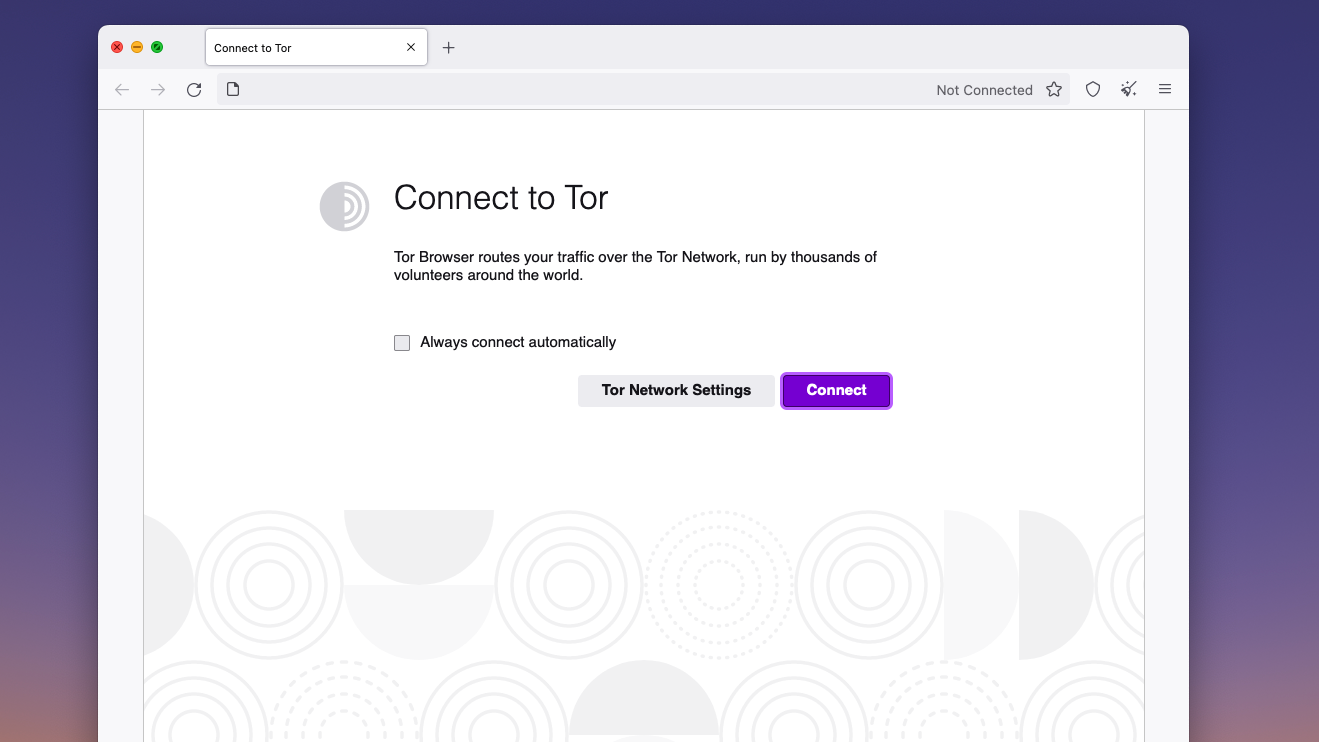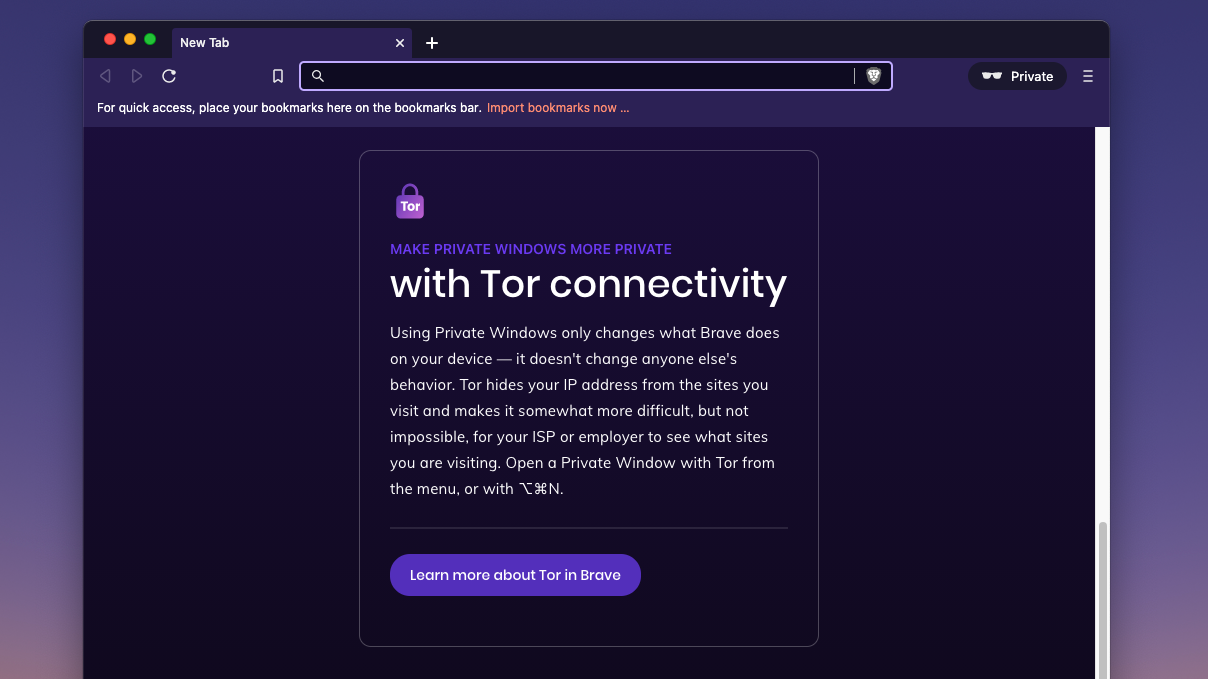What is Tor and how it can help you be anonymous online
A privacy tool that can help you stay anonymous online — for free

There’s no greater myth than the one your phone or browser wants you to believe: if you toggle on all their security protections, you become anonymous online. But that’s hardly the case. On the internet, someone, somewhere is always watching your every move. It could be the gazillion trackers following your web activity, advertisers exploiting the cookie trail you leave behind, services like Facebook hoarding your data to build dossiers on you, your service provider peeking into your traffic — the list is endless.
Though it’s become increasingly complex to stay private on the internet, at the same time, privacy has never mattered more as states and malicious bodies weaponize online data for surveillance and threats. There’s no one panacea for these dangers, and it’s close to impossible to be anonymous. However, a tool called Tor might just be your best bet.
Short for The Onion Router, Tor is an open-source software that bends over backward to conceal your identity. How does it work, and more importantly, how can you take advantage of it to go anonymous online?
- Best VPN services 2022
- 5 reasons why you need a VPN — cheap flights, fast internet and more
- Replay attacks allow hackers to eavesdrop on you — how to prevent them
What is Tor, and how does it work?
Tor relies on a decades-old principle developed by the U.S. Navy’s research lab to secure the country’s intelligence communications from eavesdroppers. Its backbone is a network of thousands of volunteer computers spread across the world called relays, which add multiple layers of encryption over your traffic — nestled like an onion, hence the name — so that no one can trace it back to you.

Typically, when you fire up the internet, you effectively link up with the server where the website or app you’re browsing is located. If someone intercepts your connection, they can easily tell who you are, where you are from, what content you’re requesting, and more. Tor seeks to conceal that link by introducing a few detours between you and your destination.
When you browse the web with Tor enabled, your computer doesn’t directly connect to the server. Instead, it bounces off your request via at least three randomly chosen relays before delivering to the destination, and it does the same again on the way back to you.
Each relay encrypts and forwards your request to the next. More importantly, all of them run on a need-to-know basis. The first one will know the origin and the address to the second node. The next will only have information on the first and third relays. The final exit node decrypts the packet and passes it on to the destination without ever knowing who initiated the sequence in the first place.
Stay in the know with Laptop Mag
Get our in-depth reviews, helpful tips, great deals, and the biggest news stories delivered to your inbox.
Not only is your connection secured several more times than it usually is, Tor eliminates the threat of man-in-the-middle attacks because hacking into just one of its links will prove futile as no relay has the complete picture.
Tor isn’t a silver bullet to gaining anonymity as there are a few downsides, which we’ll get to later, but it significantly cuts down the risk and makes tracking your online traffic a nightmare.
How Tor survives censorship
Tor is particularly active in censorship-hit countries, such as, most recently, Russia, where the government tends to regularly block access to sites. For uninterrupted services in such places, platforms like Twitter and Facebook offer Tor-friendly versions of their websites.

Similar to how Tor relays your traffic through numerous nodes, it can function the other way around with a special web address to hide servers. Companies can deliver data from their servers via the Tor mechanism so that the local authorities can’t detect and ban them because the end user is technically only connecting to the exit relay and not to, say, Twitter.
Is Tor better than a VPN?
Tor may sound like an overpowered VPN, but there are more differences than similarities under the hood.
A VPN masks your identity by routing your traffic through a centralized channel between you and the server. In this case, you not only have to trust that an intruder can’t crack the VPN’s defenses, but also that the VPN provider itself won’t eavesdrop on what you’re doing on the web.
On the other hand, Tor depends on a decentralized network of computers spread across the world and pushes your internet requests through multiple layers of encryption and nodes. No one relay has all the information, and every time you browse the web, your traffic is routed through new, random locations. It’s also free, unlike some reliable VPN services, which usually have a monthly fee.
VPN services do have one-upper hand, though. You can select which region you want to browse from and unlock foreign content on streaming apps like Netflix.
Instead of picking between a VPN and Tor, it’s better to use them together for added security, but if you have to choose, the latter is the way to go. That said, many notable VPN services also come with support for Tor browsing.
Will Tor make your internet slow?
Privacy often comes at the cost of convenience, and Tor is no different. As opposed to just a single two-way connection, you’re establishing over half a dozen.Therefore, naturally, it will take a second or two for your website to load on Tor. It’s also worth noting that Tor hosts about a million daily users but just over 6,000 relays.
Is Tor safe?
Tor is legal, and you won’t get into trouble for downloading it, but there are a few things you must keep in mind.

Tor is often referred to as the gateway to the dark web. Because it allows anyone to cover their tracks, it’s actively employed for illegal activities such as piracy.
The bigger concern with Tor in recent years has to do with the exit node. Although Tor’s exit node doesn’t have a clue about the original sender, it’s responsible for decrypting your data packet for the recipient. Hence, it can technically read it, unlike the other nodes. Due to the spike in Tor activity from malicious actors, privacy experts have warned that law enforcement and intelligence servers now run their own exit nodes for surveillance purposes. Though the Tor network picks the final node at random, anyone can sign up to be a relay and, now and then, get a chance to serve as the exit.
However, if you’re only browsing through Tor to escape the eyes of advertisers and trackers, you should be fine. For additional security, you can stick to HTTPS-only sites so that your data remains air-sealed while moving between nodes.
How to use Tor
There are a few ways you can take advantage of Tor. The most straightforward method is to download the official Tor browser, which works like any other browser with a range of extra advanced security protections. It is available for Windows, macOS, Android, and Linux. Alternatively, you can use the Brave Browser’s incognito mode that automatically toggles on Tor. On an iPhone and iPad, you can grab the open-source Onion Browser to navigate the web via Tor.
If you’re on Android, there’s another handy app you should install. It’s called Orbot, and it encrypts all the traffic leaving your phone with Tor, not just your browser activities.
Shubham Agarwal is a freelance technology journalist from Ahmedabad, India. His work has previously appeared in Business Insider, Fast Company, HuffPost, and more. You can reach out to him on Twitter.
